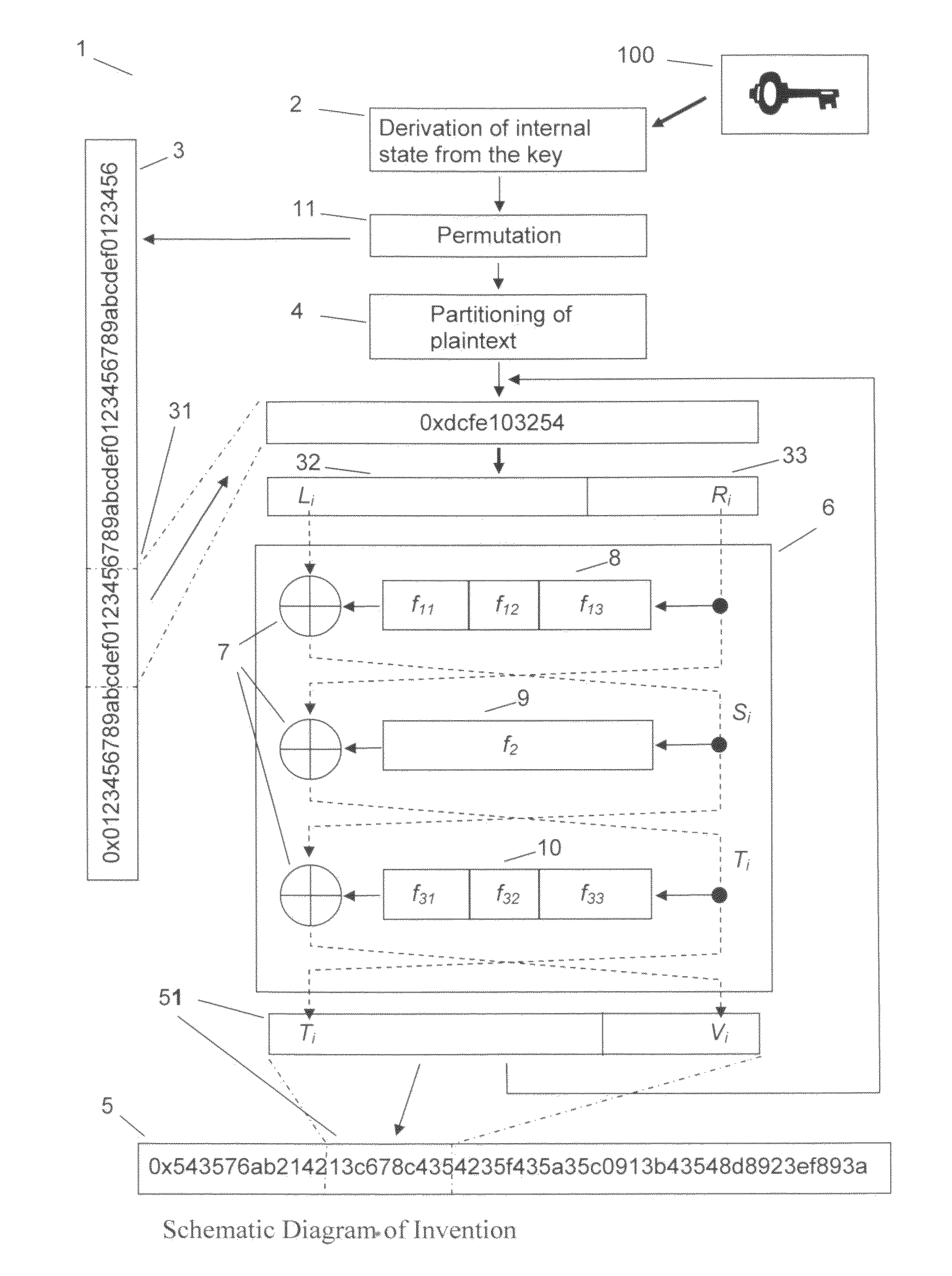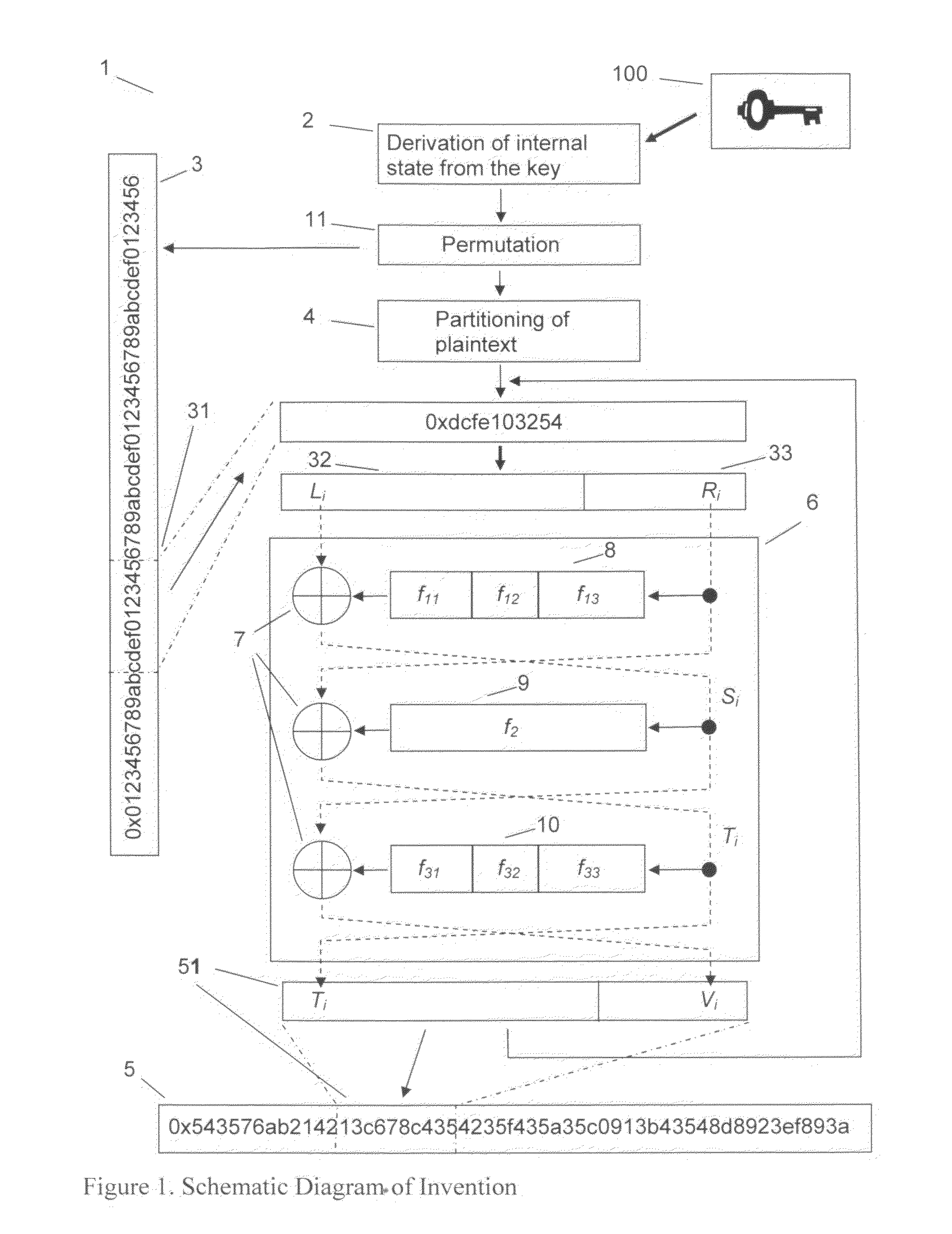Block cipher
a block cipher and block algorithm technology, applied in the field of block ciphers, can solve the problems of short block length algorithms, only a few ciphertext bits can change their state, and unbalanced feistel networks are only rarely used,
- Summary
- Abstract
- Description
- Claims
- Application Information
AI Technical Summary
Benefits of technology
Problems solved by technology
Method used
Image
Examples
Embodiment Construction
[0025]The invention underlies the problem of a method for the encryption of data block by block with a variable and much greater block length than the typical block lengths of conventional ciphers like AES and DES.
[0026]A block cipher with variable block length that is according to the invention first derives from the key the following resources: all round keys, initialization of all variables that are needed to operate pseudorandom number generators, computation of permutation tables. The entire internal state of the method is solely determined by the key. In order to derive the internal state from the key it is possible to use compression functions like MD5, SHA-1 or Whirlpool, but also pseudorandom number generators or any other combination of nonlinear and non-invertible functions that are suitable for this purpose. For many applications (of a cipher) it is not at all a downside if the execution of this procedural step comprises of a substantial amount of computations. As an exa...
PUM
 Login to View More
Login to View More Abstract
Description
Claims
Application Information
 Login to View More
Login to View More - R&D
- Intellectual Property
- Life Sciences
- Materials
- Tech Scout
- Unparalleled Data Quality
- Higher Quality Content
- 60% Fewer Hallucinations
Browse by: Latest US Patents, China's latest patents, Technical Efficacy Thesaurus, Application Domain, Technology Topic, Popular Technical Reports.
© 2025 PatSnap. All rights reserved.Legal|Privacy policy|Modern Slavery Act Transparency Statement|Sitemap|About US| Contact US: help@patsnap.com


